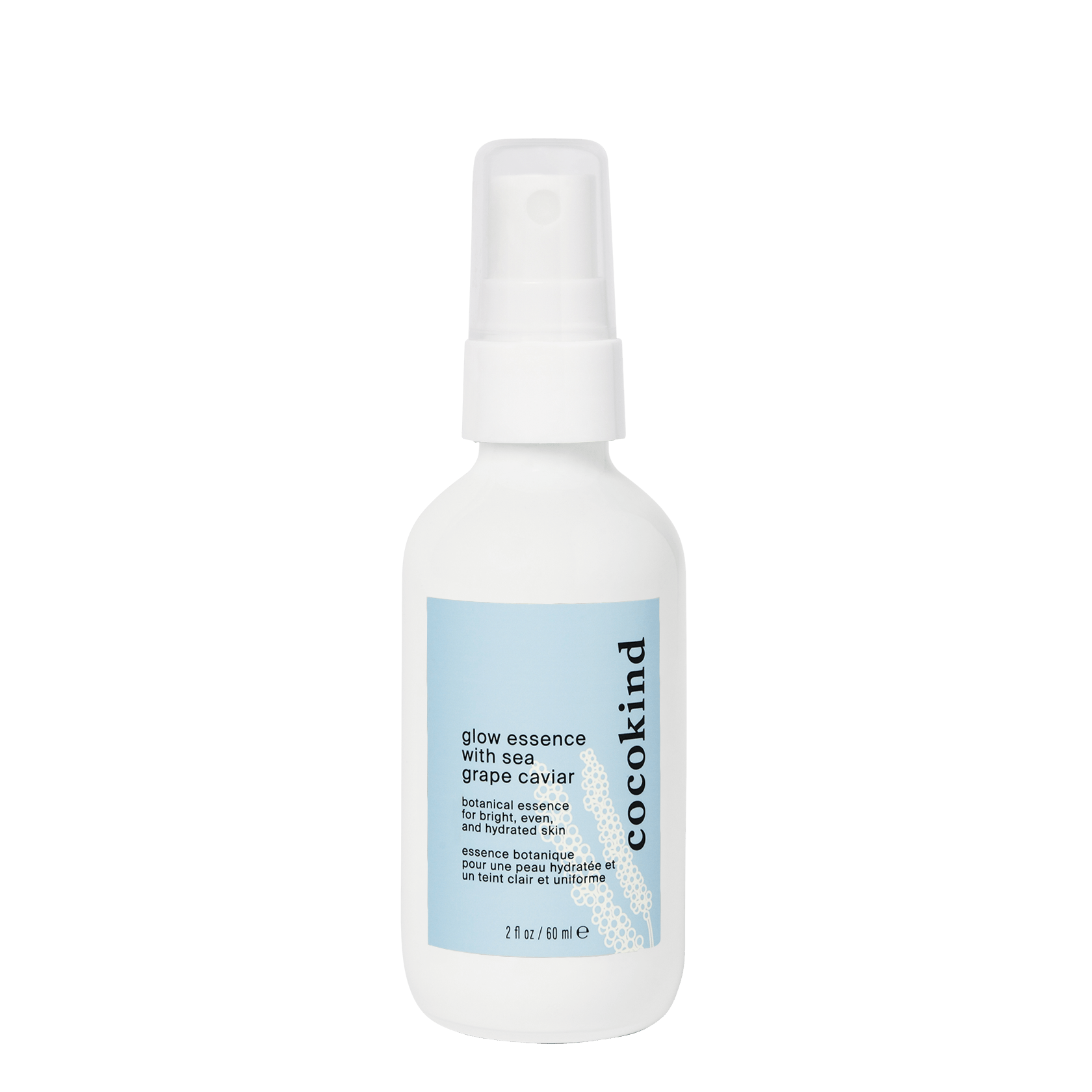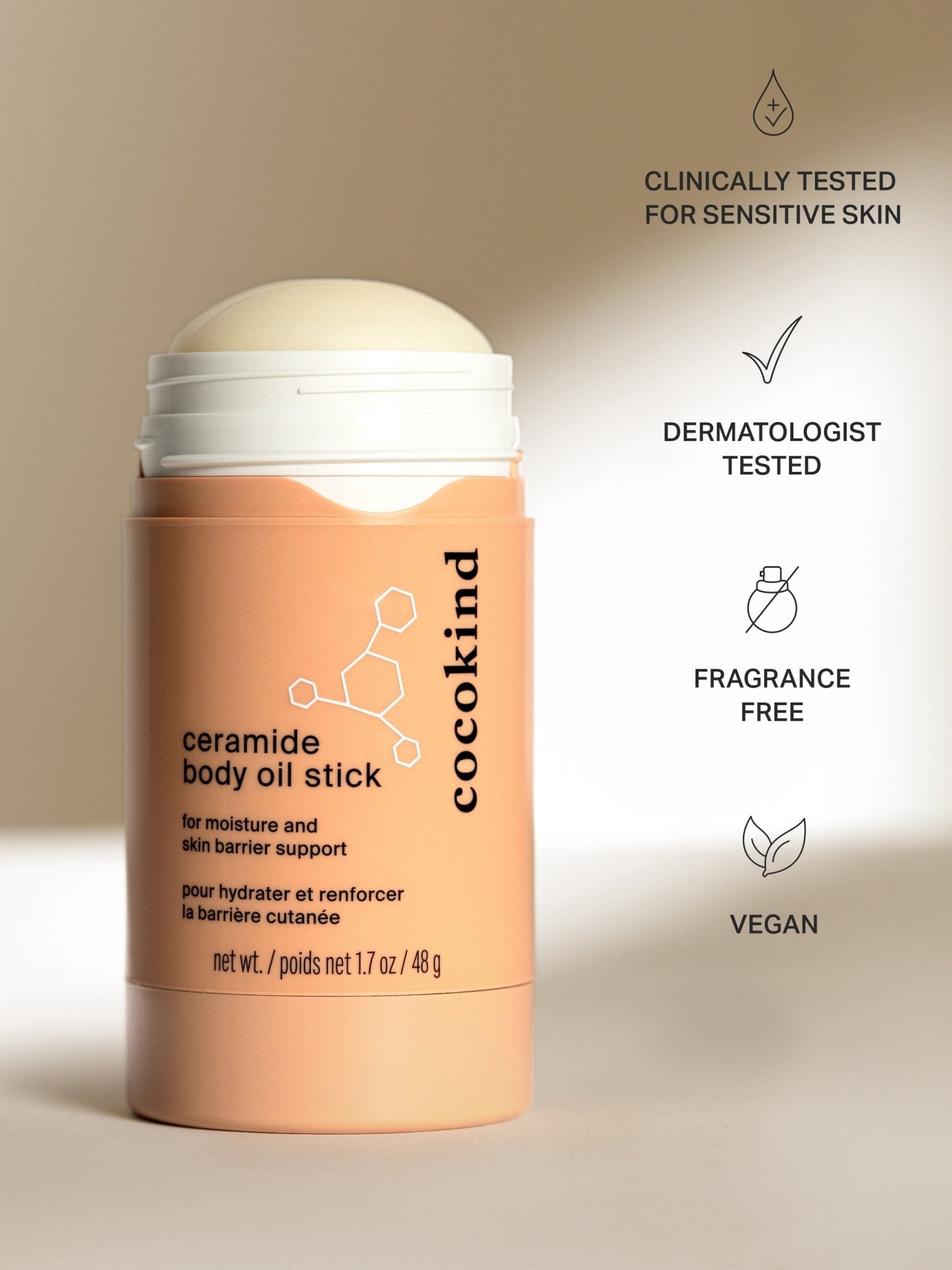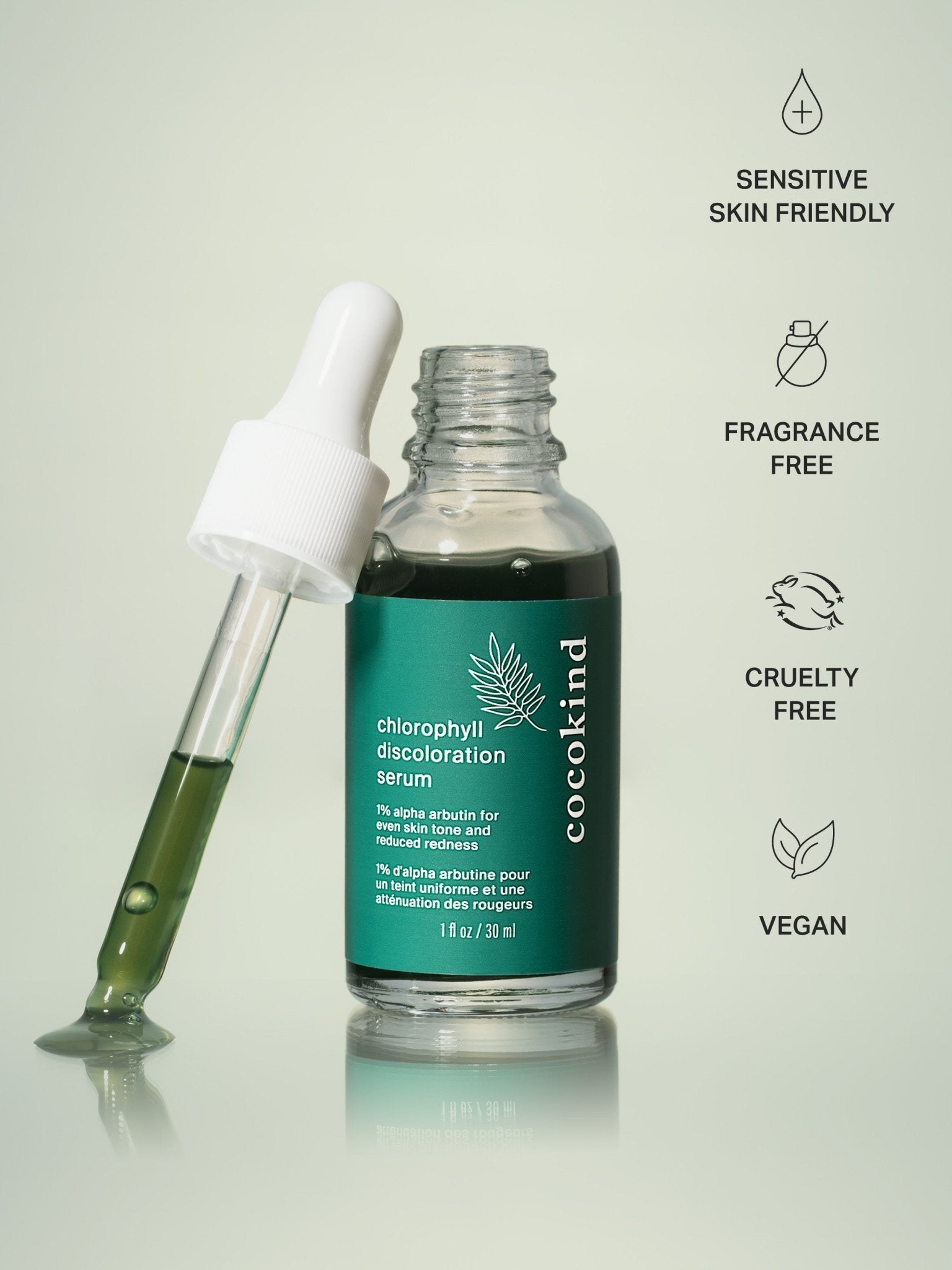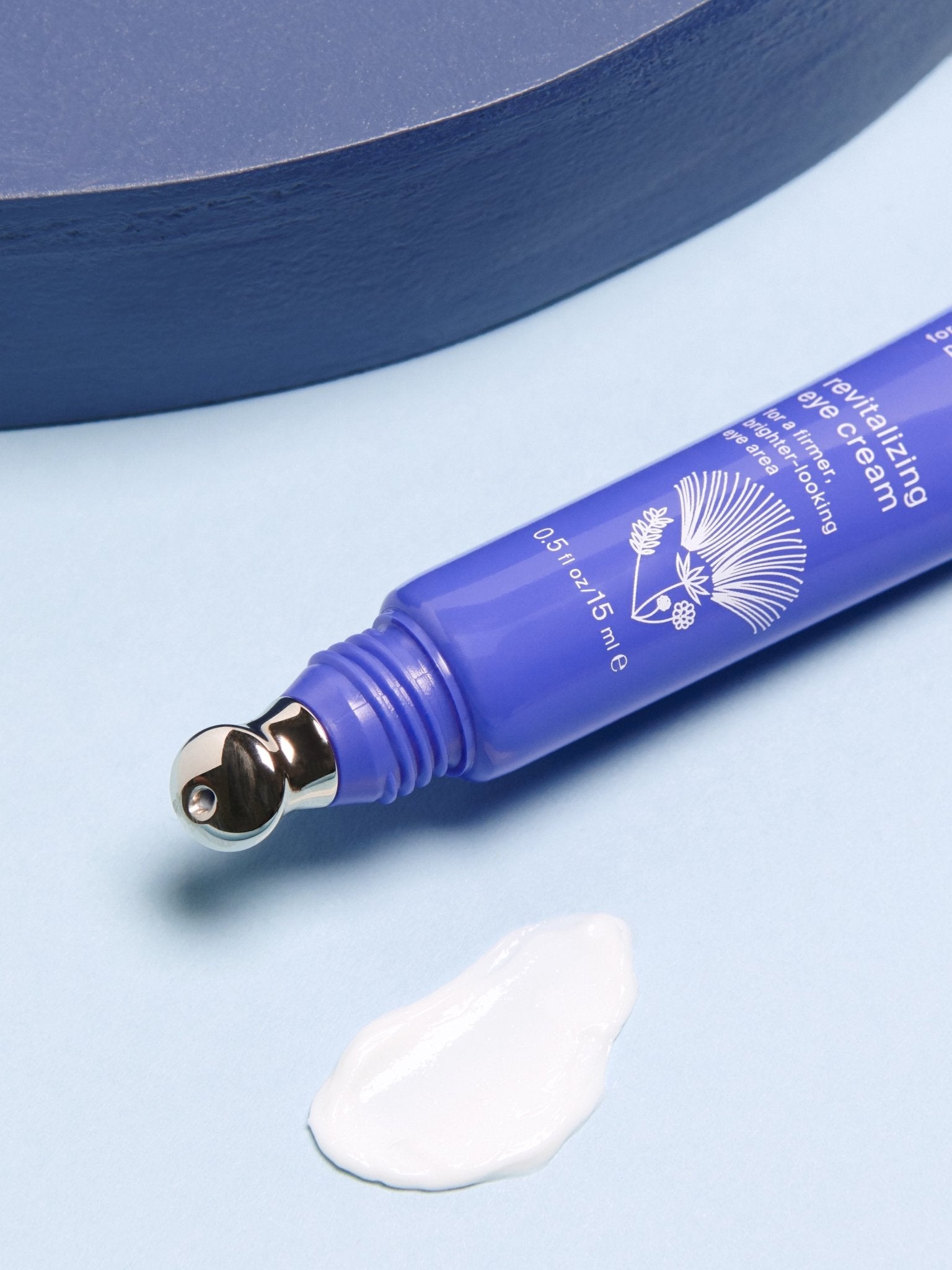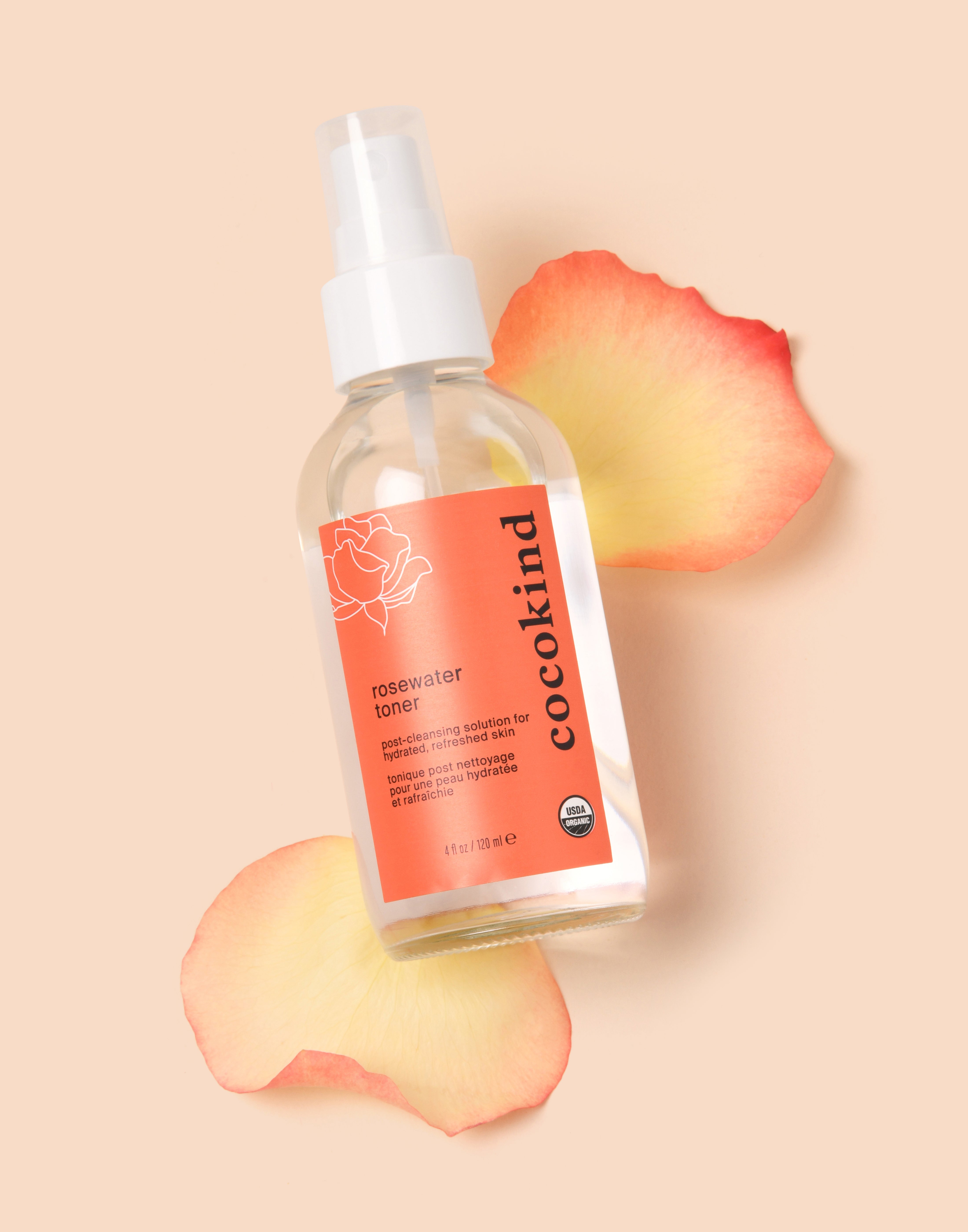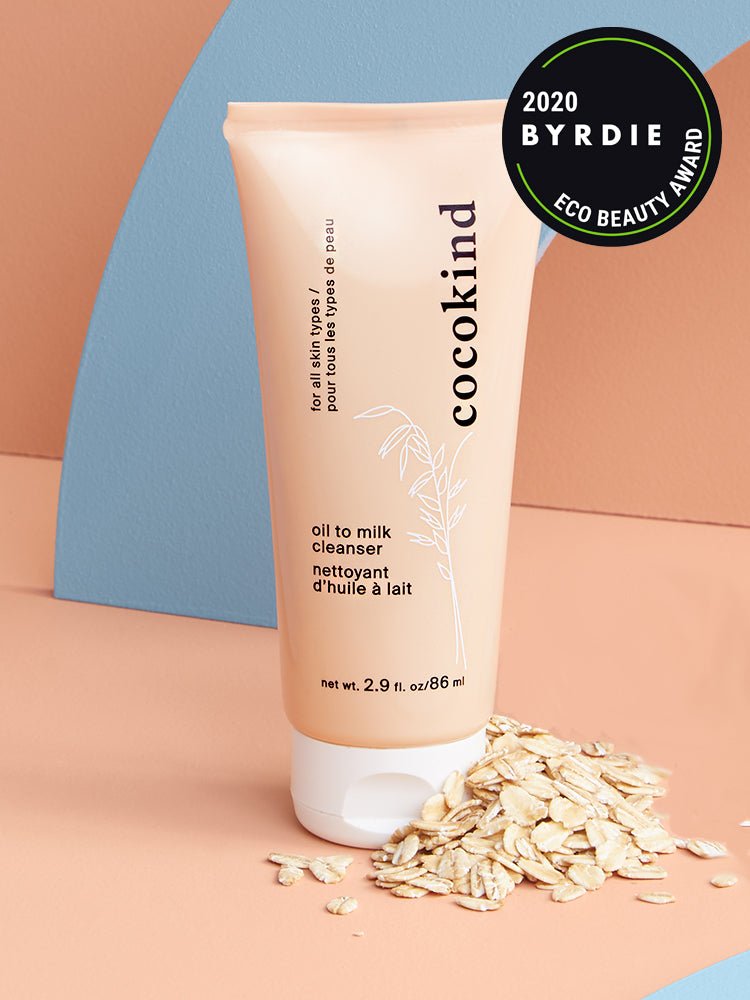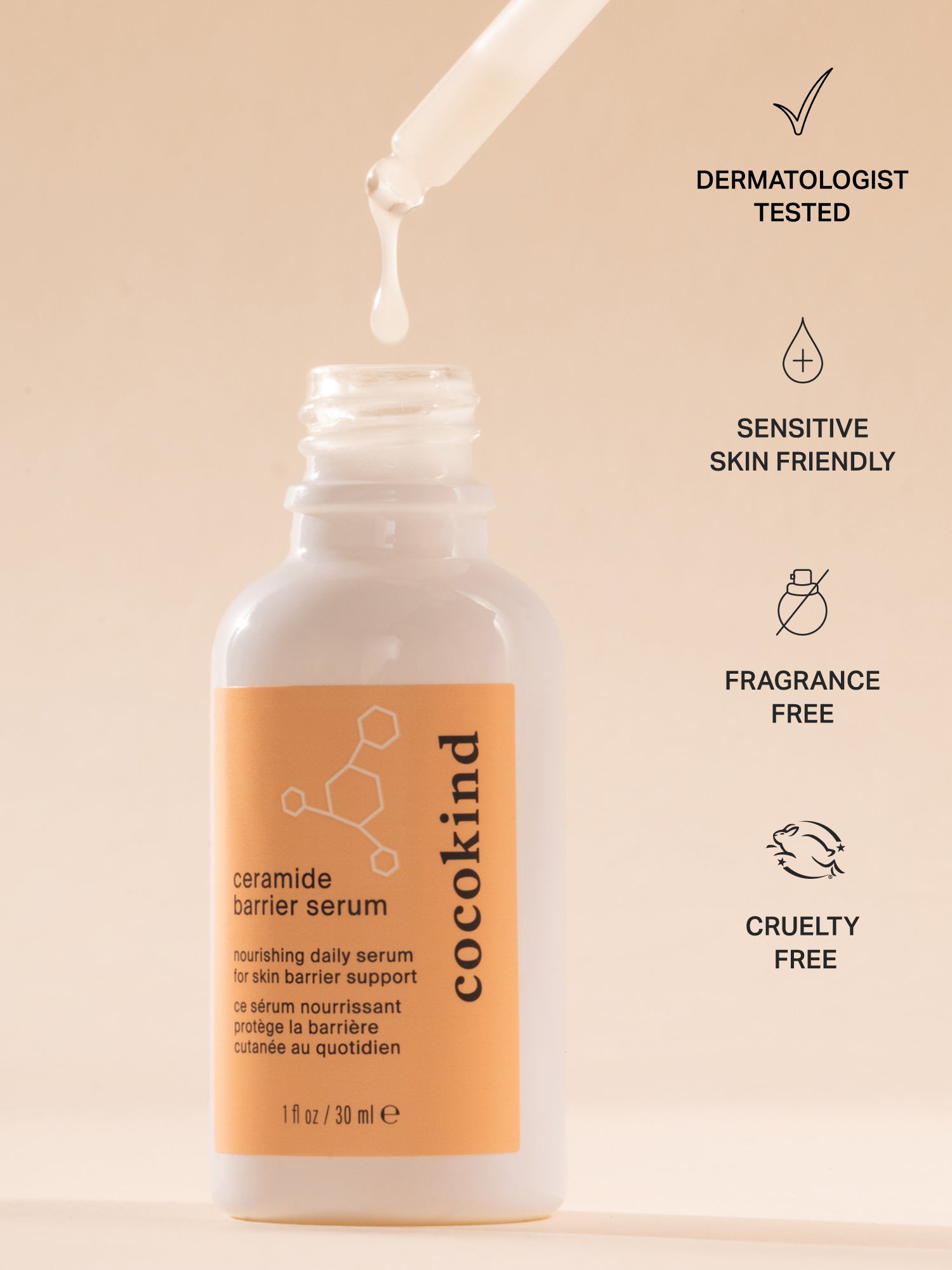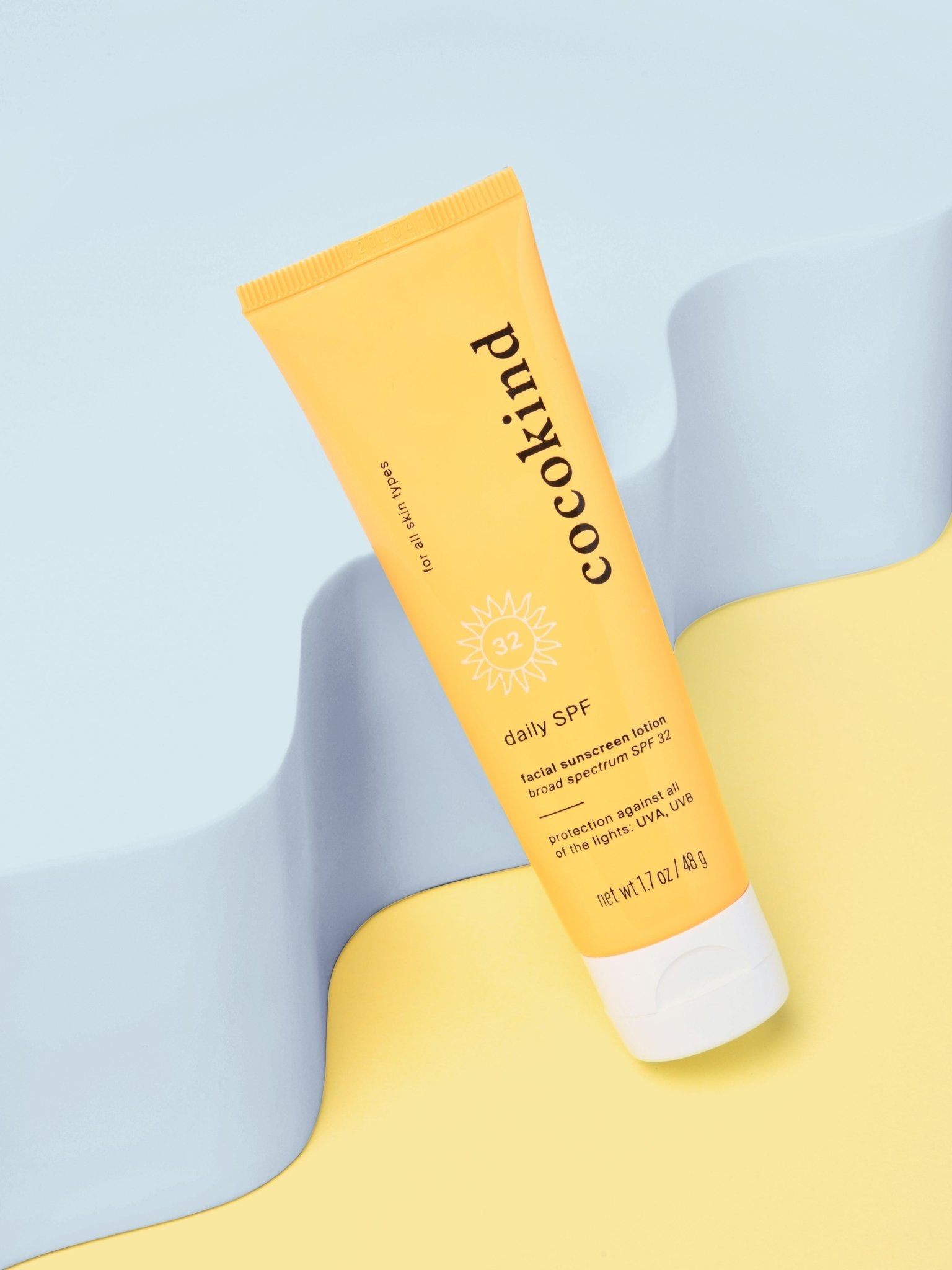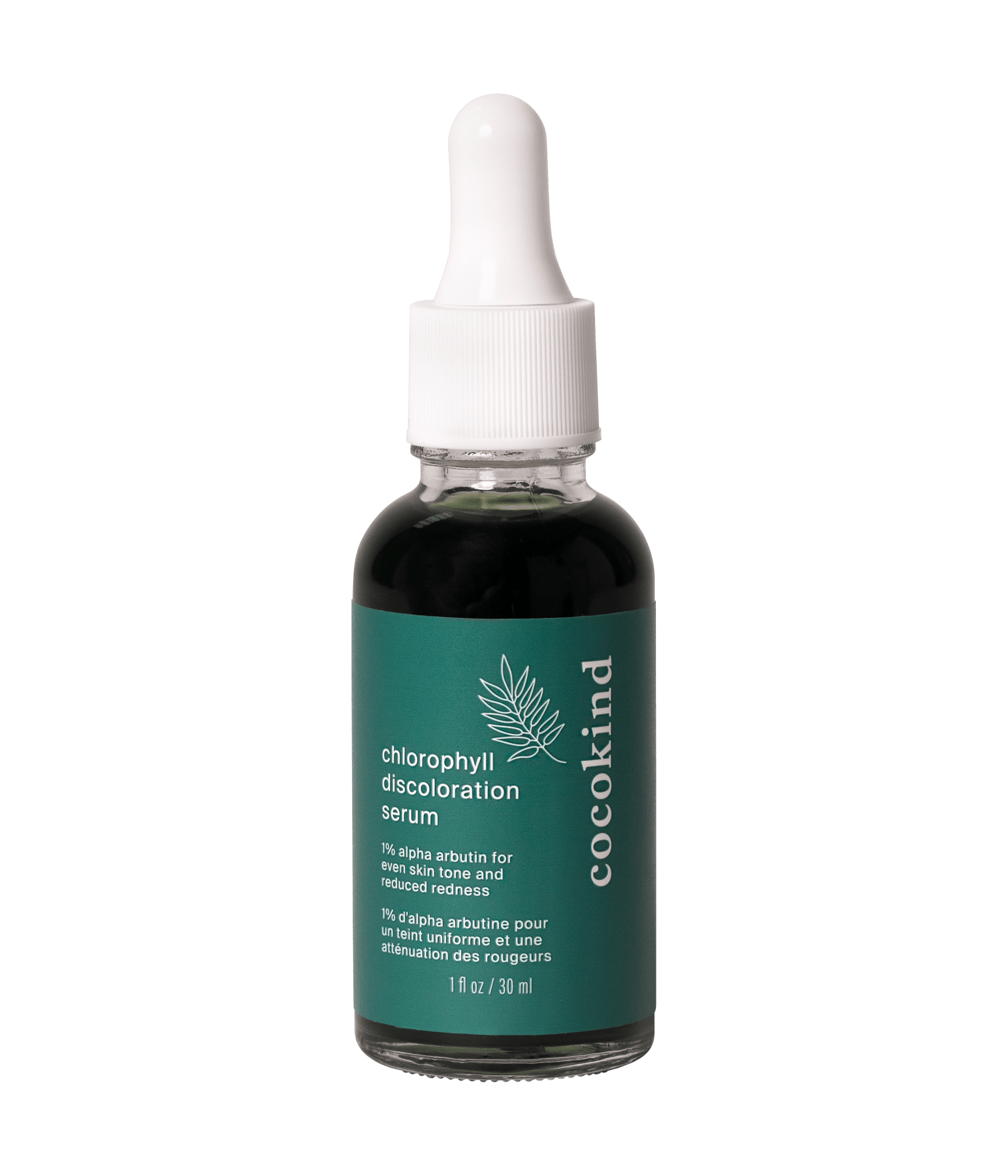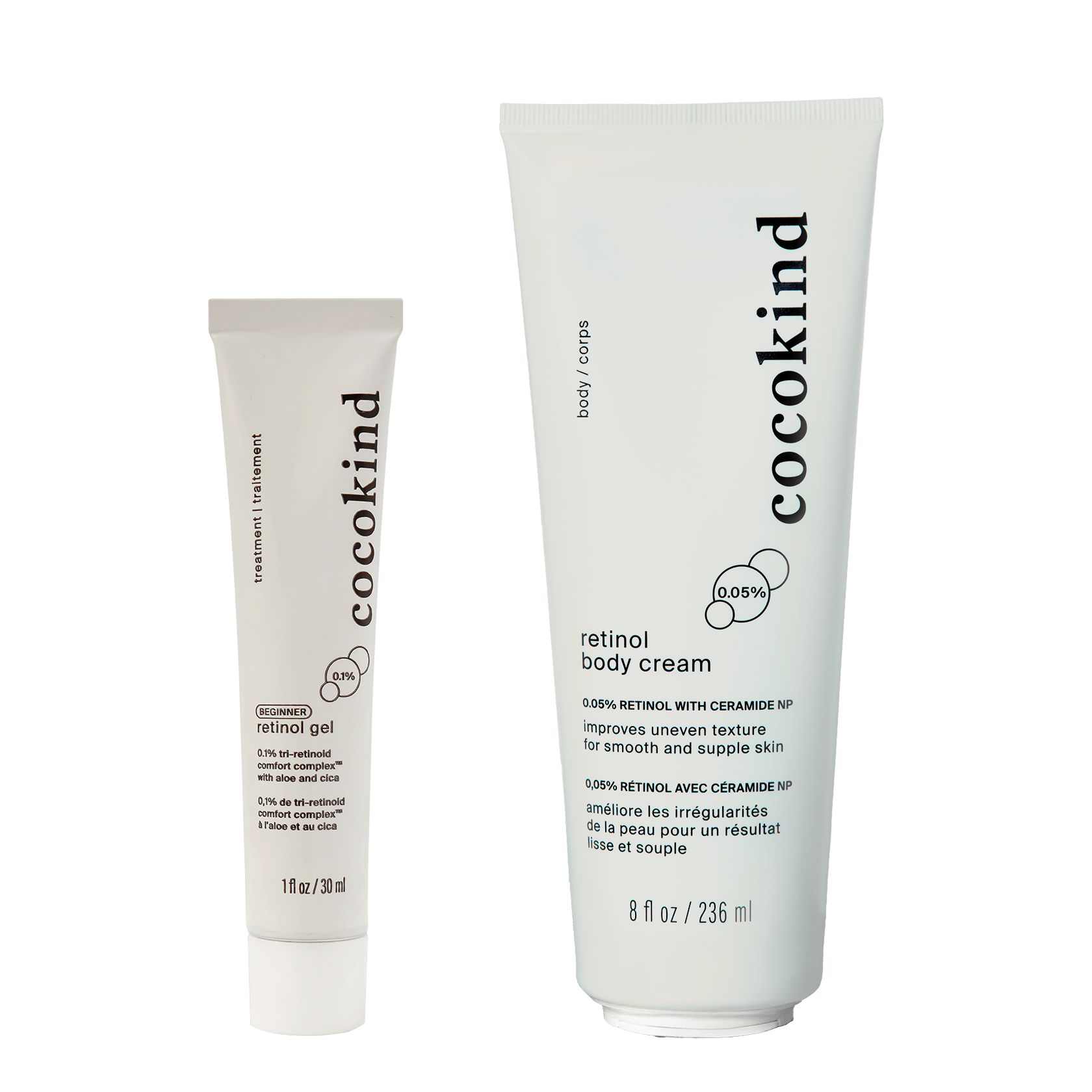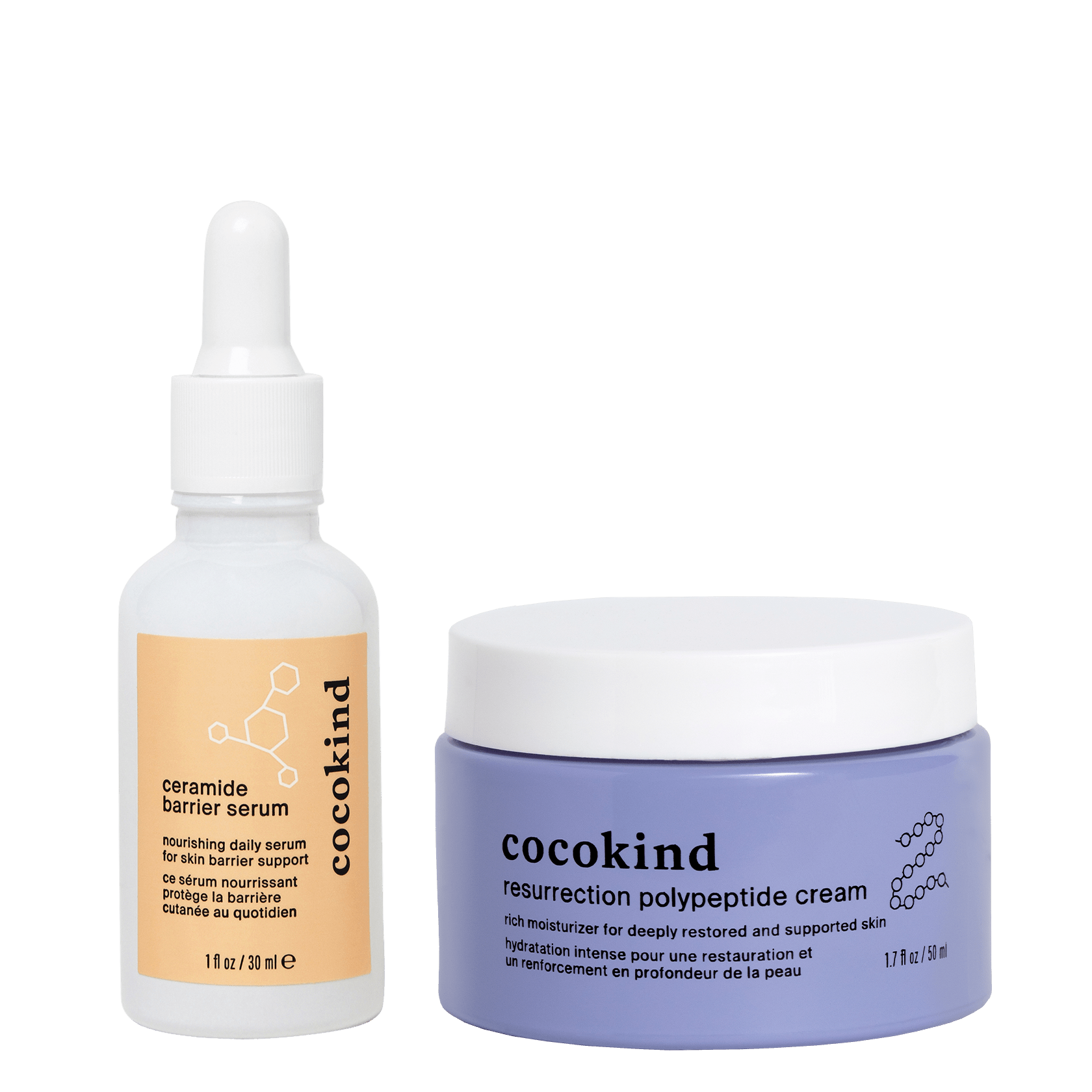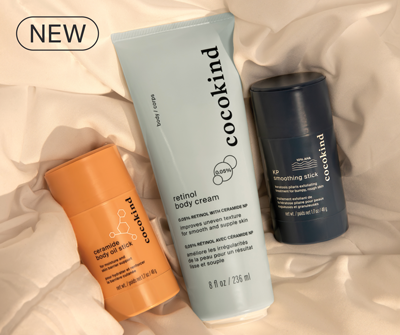You might have heard the terms "dry skin" and "dehydrated skin" used interchangeably. However, they are NOT the same! In order to properly treat your own skin type, it’s essential to know the difference.
what is dry skin?
Dry skin is a skin type that produces less oil than other skin types. Dry skin is hereditary - a skin type that you're born with, rather than a condition you develop.
Oil is necessary to protect, lubricate, and nourish the skin, so those with dry skin may experience roughness, excessive dryness, or flakiness (that sometimes appears in patches). Dry skin rarely feels oily.
what is dehydrated skin?
On the other hand, anyone can have dehydrated skin - even those with oily skin. It’s far more common than dry skin. Like the name indicates, dehydrated skin lacks moisture in its top layer. As a result, it tends to appear dull, show accelerated fine lines and wrinkles, and feel tight despite added moisture.
If left untreated, dehydrated skin often produces excess oil to compensate for the lack of moisture. And this is where acne comes in! Conversely, dry skin types won’t ever or will rarely ever produce excess oil.
common causes of dehydrated skin:
-Not drinking enough water
-Indoor heat/AC systems
-Exposure to harsh temperatures (too much sun, wind, or snow!)
-Diet (consuming too much caffeine, alcohol, salt, etc.)
-Lack of sleep and other lifestyle factors
-Frequent traveling / airplane exposure
are you dry or dehydrated?
Wash your face with a gentle cleanser (like our facial cleansing oil or our oil to milk cleanser), and check in on your skin in an hour. If it lacks moisture all over, you likely have dry skin. However, if only your cheeks or under eye area feel tight, your skin is most likely just dehydrated!
how do I treat dry skin?
Those with dry skin can benefit from a nourishing, hydrating skincare routine. Here are a few we'd recommend.
AM Routine:
1) massage cleansing oil into face and remove with a damp washcloth or cotton pad OR massage oil to milk cleanser into damp skin and rinse away with water
2) spritz rosewater toner directly onto skin or apply to a cotton pad and swipe all over face
3) spritz glow essence directly onto face and pat in with your fingertips to improve absorption of the products you use next
3) massage or pat 1-2 drops of our vitamin C serum into skin for a burst of ultra-hydrating hyaluronic acid
4) apply revitalizing eye cream to your eye area
5) apply mymatcha all-over moisture stick to lips (and eye area if you'd like to lock in extra moisture there!)
6) moisturize with our any of our oils or apply our texture smoothing cream and then pat an oil on top to seal it in
7) apply daily SPF - our lightweight physical sunscreen helps protect skin against UVA rays, UVB rays, blue light, AND pollution!
PM Routine:
1) use our cleansing oil or oil to milk cleanser to remove makeup and dirt
2) mix any of our oils with our chlorophyll mask. apply and leave on face for 10-20 minutes.
3) remove mask and follow up with our rosewater toner
4) spritz our glow essence directly onto face and pat in with your fingertips to boost hydration
5) apply revitalizing eye cream to your eye area
6) apply mymatcha all-over moisture stick to lips, dry spots, and eye area if you'd like to lock in extra moisture there!
7) use our chia facial oil or matcha face moisturizer to moisturize
OR
1) use our cleansing oil or oil to milk cleanser to remove makeup and dirt
2) spritz rosewater toner directly onto skin or apply to a cotton pad and swipe all over face
3) spritz our glow essence directly onto face and pat in with your fingertips
4) apply revitalizing eye cream to your eye area
5) apply our resurfacing sleep mask and let dry
6) apply texture smoothing cream on top for increased hydration
*You’ll also want to exfoliate regularly to make sure you’re giving room for new skin cells to come to the surface! Don’t overdo it though – we recommend using our sea moss exfoliator 2x per week.
how do I treat dehydrated skin?
The key here is to increase your body and skin’s water content, starting from the inside out. While the general rule of thumb is 8 glasses of water per day, try upping it to 10-12 cups a day!
You’ll also want to ingest salt and caffeine only in moderation, as these can be extremely dehydrating. And for all of the tea drinkers out there – herbal tea can count towards your daily water intake, but teas that contain caffeine cannot!
In addition, take note of your lifestyle decisions. Getting a good amount of sleep is crucial to healthy skin, because it helps keep your body's pH and hydration levels balanced, while also keeping unnecessary inflammation at bay.
If you are a frequent traveler and spend a significant amount of time on airplanes, try to increase your daily water and sleep intake above the average amount.
You can also take topical action with hydrating toners, oils, masks, essences, and serums. However, note that having dehydrated skin doesn’t mean that you should ALWAYS use products made for dry skin. You could actually have combination skin or even oily skin that appears dry due to your body's low water content.
The best thing to do is listen to your skin and make sure to stay flexible! No matter what skincare products you use, hydrating your body from the inside out will be the most important factor here.
